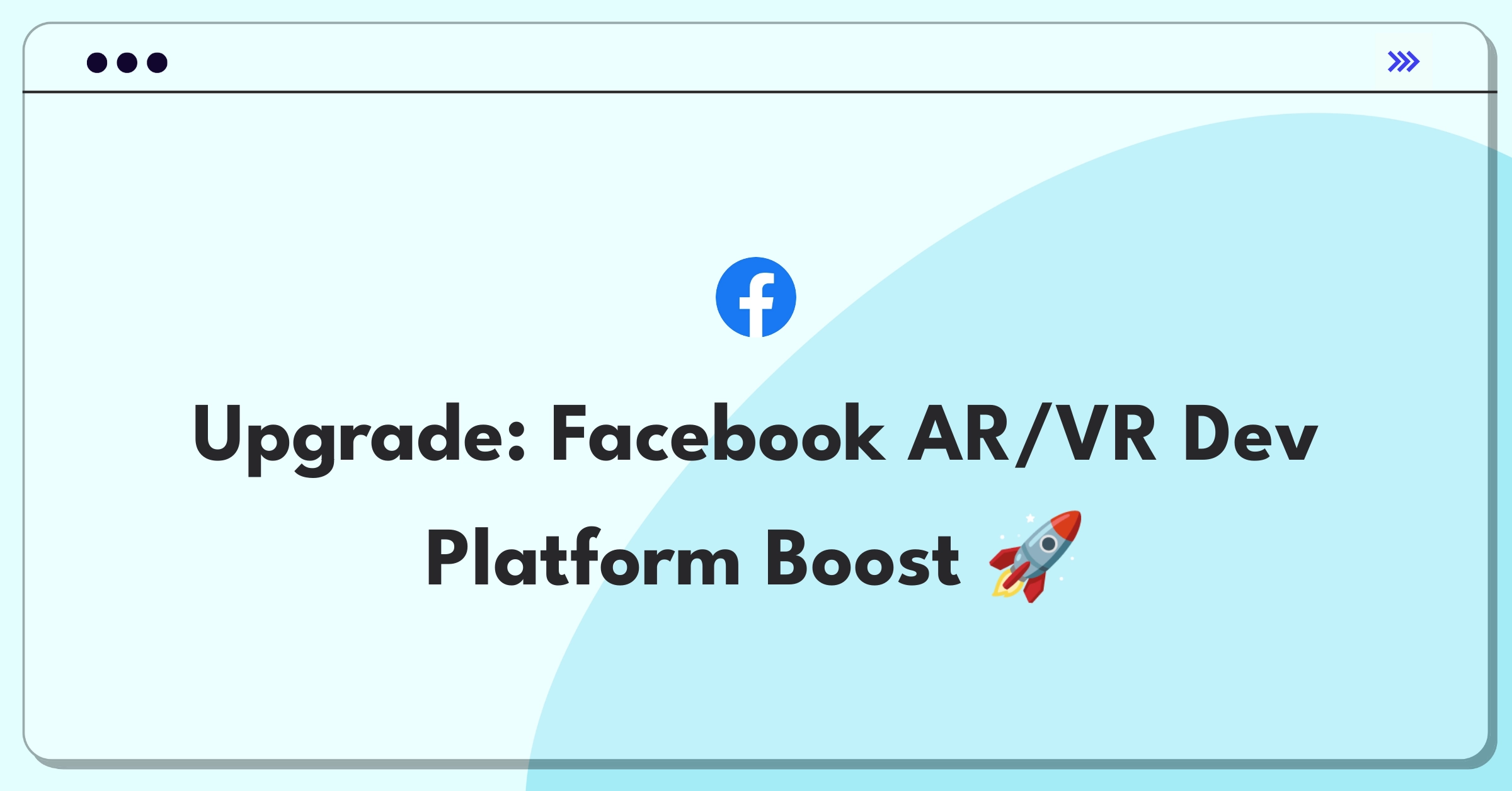Enhancing Facebook's AR/VR Developer Platform for Improved Performance and Reliability
To improve Facebook's AR/VR developer platform, we should focus on optimizing the SDK, enhancing cloud rendering capabilities, implementing more robust error handling and debugging tools, and creating a more efficient asset pipeline. These improvements will significantly boost performance and reliability for AR/VR developers.
Introduction
The challenge at hand is to improve the current platform and tools for Facebook's AR/VR developers to enable them to build solutions with better performance and reliability. This task is crucial for maintaining Facebook's competitive edge in the rapidly evolving AR/VR space and ensuring a seamless experience for both developers and end-users. I'll approach this problem by first clarifying the technical requirements, analyzing the current state, proposing solutions, outlining an implementation roadmap, defining metrics for success, managing risks, and considering long-term strategy.
Tip
Ensure that all technical improvements align with Facebook's broader AR/VR ecosystem goals and developer needs.
Step 1
Clarify the Technical Requirements (3-4 minutes)
Key Technical Areas to Clarify:
For each question, I'll provide:
- Why this technical aspect matters
- A hypothetical answer based on industry knowledge
- The impact on our technical approach
Product Context: This matters because it determines the scope of changes we can make and the existing technical debt we might need to address. Let's assume the platform is relatively mature but still evolving rapidly. This would impact our approach by requiring us to balance maintaining backward compatibility while introducing new performance-enhancing features.
Technical Constraints: Understanding current limitations is crucial for identifying improvement areas. Let's assume there are issues with frame rates on complex AR scenes and latency in VR environments. This would guide us to focus on graphics optimization and network performance improvements.
Engineering Team Dynamics: This affects how we implement changes and support developers. Assuming a collaborative model with regular feedback loops, we'd prioritize creating robust documentation and support channels alongside technical improvements.
Security & Compliance: AR/VR applications often handle sensitive data like spatial mapping of users' environments. Assuming strict privacy requirements, we'd need to implement strong encryption and data minimization techniques in our platform improvements.
Infrastructure: The backend infrastructure dictates scalability and performance capabilities. Assuming a cloud-based infrastructure with some legacy systems, we'd focus on modernizing and optimizing cloud resources while planning for a potential hybrid model to support edge computing for AR/VR applications.
Tip
After clarifying these points, I'll state that I'm assuming a cloud-based infrastructure with room for optimization, a mature but rapidly evolving product, and a strong focus on privacy and performance in our technical approach.
Subscribe to access the full answer
Monthly Plan
The perfect plan for PMs who are in the final leg of their interview preparation
$99 /month
- Access to 8,000+ PM Questions
- 10 AI resume reviews credits
- Access to company guides
- Basic email support
- Access to community Q&A
Yearly Plan
The ultimate plan for aspiring PMs, SPMs and those preparing for big-tech
$99 $33 /month
- Everything in monthly plan
- Priority queue for AI resume review
- Monthly/Weekly newsletters
- Access to premium features
- Priority response to requested question


.png)